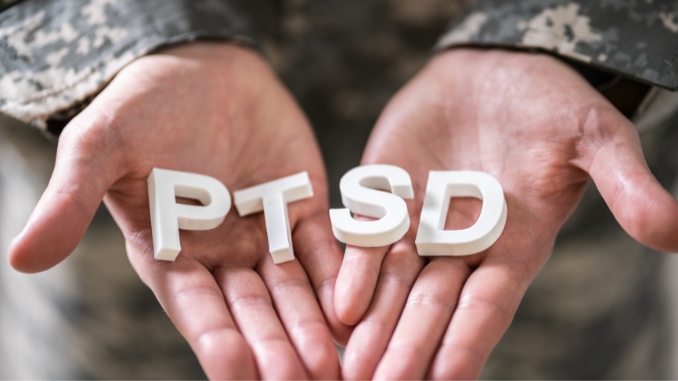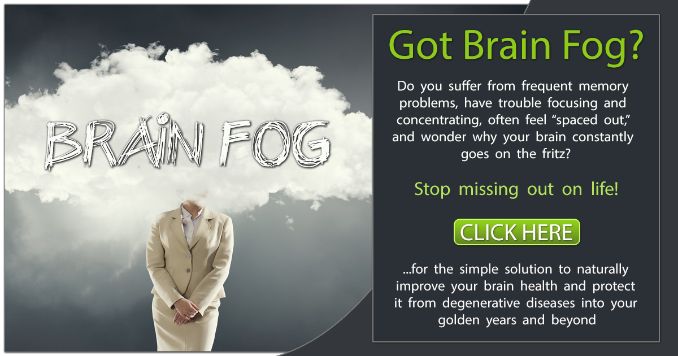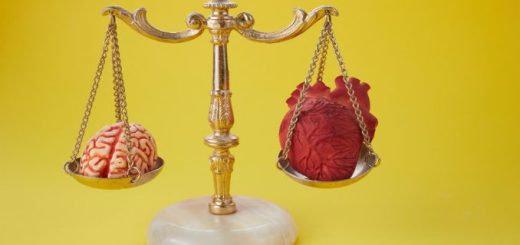The Weight of Trauma: Understanding the Types of PTSD

Last updated on April 11th, 2025 at 05:05 pm
Post-Traumatic Stress Disorder (PTSD) is an intricate psychiatric condition that can afflict individuals who have encountered profoundly distressing events, posing a significant threat to their mental, physical, social, and spiritual well-being. Although historically known by names, such as “shell shock” and “combat fatigue,” it is not confined to combat veterans. Still, it can impact people of all backgrounds, ethnicities, and ages. Notably, women are twice as likely as men to experience PTSD. Affecting approximately 3.5% of U.S. adults each year and with a lifetime prevalence of 8% in adolescents, PTSD remains a prevalent mental health concern. Keep reading to learn about the various types of PTSD.
Understanding Post-Traumatic Stress Disorder
A comprehensive grasp of types of PTSD is beneficial to individuals and society alike as it fosters awareness, early intervention, and improved mental health outcomes. Therefore, let's delve into its history, symptoms, diagnosis, and treatment to explore and raise awareness of this mental health condition
The Origin of PTSD
Various conflicts trace the history of PTSD. During World War I, soldiers who experienced the horrors of trench warfare often displayed symptoms resembling what we now understand as PTSD. At the time, it was referred to as “shell shock” or “war neurosis.” These soldiers exhibited a range of distressing symptoms, including anxiety, flashbacks, and emotional numbing, which impacted their mental and emotional well-being. Similar symptoms were observed in post-World War II combat veterans, leading to the term “combat fatigue.” However, formal recognition and understanding of PTSD as a mental health condition only came in more recent decades.
During the Vietnam War, a more comprehensive understanding the types PTSD emerged, drawing increased attention to the psychological impact of war. The pivotal moment came in 1980 when PTSD was formally recognized and classified as a psychological well-being issue in the Diagnostic and Statistical Manual of Mental Disorders (DSM-III). Since then, it has been acknowledged as a complex condition affecting not only veterans but also individuals exposed to various traumatic events, like natural disasters and sexual assault. This enhanced understanding has paved the way for improved diagnosis, treatment, and aid for those affected by PTSD.
Defining PTSD
PTSD (Post-Traumatic Stress Disorder), according to the APA (American Psychiatric Association), is a psychiatric condition that manifests in individuals who have undergone or observed traumatic incidents, sequences of events, or specific situations. These experiences may be perceived as emotionally or physically damaging and also life-threatening. They can impact mental, physical, social, and also spiritual aspects of well-being. Instances encompass natural disasters, severe accidents, acts of terrorism, wartime activities, instances of sexual assault or rape, historical trauma, intimate partner violence, and instances of bullying.
Additionally, in the Diagnostic and Statistical Manual of Mental Disorders, Fifth Edition (DSM-5), different types of PTSD is diagnosed according to the following symptoms:
1. Exposure to Trauma
This first criterion involves encountering a traumatic event in various ways. It can happen through direct experience, where the individual is a victim or a witness to the event. Alternatively, one may experience it indirectly through learning that a close family member or friend has gone through such trauma, which can also lead to distress.
2. Avoidance
People with PTSD often engage in a range of behaviors to avoid situations or stimuli that could trigger distressing memories or feelings connected to the traumatic event. Avoidance can take many forms, including steering clear of thoughts or conversations related to the trauma.
Individuals might also avoid people, places, or activities that serve as reminders of the traumatic experience. This can lead to emotional numbing or even amnesia in some cases, where individuals might experience dissociative amnesia, rendering them unable to recall essential aspects of the traumatic event.
3. Negative Alterations in Cognitions and Mood
This criterion centers on persistent and distorted negative beliefs about oneself, others, or the world. It can include believing that one is inherently bad or that the world is entirely dangerous. Individuals may experience distorted blame or guilt related to the traumatic event, even feeling responsible for what happened. Prolonged negative emotional states, such as fear, anger, or shame, are also common. These emotional alterations often diminish interest in previously enjoyed activities, fostering a sense of emotional numbing.
4. Arousal and Reactivity
The final category encompasses heightened arousal and reactivity to stimuli. Frequent irritability and anger are common, often resulting in outbursts. Some individuals engage in reckless or self-destructive behavior without much consideration of the consequences. They might also be constantly on guard or watchful for signs of danger, a state called hypervigilance. Sleep disturbances are another facet, making it challenging to fall asleep or stay asleep, often due to nightmares or persistent hypervigilance.
Severity and Types of PTSD
1. Normal Stress Response
A normal stress response occurs when an individual experiences a traumatic event, and their reactions align with the expected range of stress responses. While distressing, these reactions resolve over time as the person processes the experience.
Sample Case: After witnessing a car accident, Sarah experiences heightened stress, nightmares, and anxiety. Over the following weeks, her symptoms gradually diminish as she processes the event, demonstrating a normal stress response.
2. Acute Stress Disorder
This another types of PTSD manifests as severe anxiety, dissociation, and other distressing symptoms following exposure to a traumatic event. If these symptoms persist for more than a month, the diagnosis may shift to PTSD.
Sample Case: Following a robbery at his workplace, Alex develops severe anxiety, nightmares, and persistent intrusive thoughts. These symptoms persist for several weeks, meeting the criteria for Acute Stress Disorder. If they continue beyond a month, a diagnosis of PTSD may be considered.
3. Dissociative PTSD
Dissociative PTSD involves a disruption in an individual's perception, memory, identity, or consciousness of the environment. This may result in a sense of detachment from reality and can complicate the overall experience of post-traumatic stress.
Sample Case: Chris, a military veteran, experiences dissociative episodes where he feels disconnected from his surroundings and has fragmented memories of traumatic combat experiences. These dissociative symptoms add an extra layer of complexity to his overall post-traumatic stress presentation.
4. Uncomplicated PTSD
This types of PTSD refers to the more typical presentation of post-traumatic stress, characterized by symptoms such as flashbacks, nightmares, and heightened arousal. It arises from a single traumatic incident and can significantly impact daily functioning.
Sample Case: Emily, a survivor of a natural disaster, develops classic PTSD symptoms like flashbacks, hypervigilance, and avoidance behaviors. Her symptoms are primarily related to the specific traumatic event, and they significantly impact her daily life.
5. Complex PTSD
This another types of PTSD develops when an individual endures prolonged and multiple traumatic events, often involving interpersonal relationships. In addition to core PTSD symptoms, individuals with complex PTSD may struggle with issues like difficulties in forming relationships and challenges regulating emotions.
Sample Case: Lisa grew up in an abusive household, experiencing prolonged emotional and physical trauma. As an adult, she struggles with difficulties in forming and maintaining relationships, emotional dysregulation, and a pervasive sense of shame, reflecting the complex nature of her traumatic experiences.
6. Comorbid PTSD
Comorbid PTSD occurs when post-traumatic stress disorder is present alongside another mental illness. This includes depression, panic disorders, substance abuse, and other anxiety disorders. These co-existing disorders can interact and intensify each other's impact, presenting unique challenges in diagnosis and treatment.
Sample Case: James, a combat veteran, not only grapples with PTSD stemming from his military service but also copes with comorbid conditions like depression and substance abuse. The interplay between these disorders complicates his treatment plan, requiring a comprehensive and integrated approach.
Treatment and Therapies
1. Talk Therapy
Talk therapy, a cornerstone in treating PTSD, provides a nurturing space for individuals to explore and process traumatic experiences. Therapists employ evidence-based modalities like Cognitive Behavioral Therapy (CBT) and Eye Movement Desensitization and Reprocessing (EMDR).
Through open dialogue, patients gain insights, learn coping mechanisms, and gradually reframe distressing thoughts. This therapeutic alliance fosters resilience, empowering individuals to confront and manage PTSD symptoms. This emphasizes validation, reducing isolation, and promoting adaptive responses, facilitating the path to healing and recovery.
2. Cognitive-Processing Therapy (CPT)
Cognitive Processing Therapy (CPT) is an evidence-based therapeutic approach designed to help individuals who are experiencing the effects of trauma, particularly those with post-traumatic stress disorder (PTSD).
Developed within the framework of cognitive-behavioral therapy (CBT), CPT focuses on addressing and restructuring the cognitive distortions and negative beliefs that can emerge as a result of traumatic experiences.
-
- Exposure
During exposure therapy, individuals gradually confront situations, memories, or triggers associated with their trauma. This helps reduce the avoidance behavior often seen in PTSD. Exposure can be done through imagination or in vivo (in real life), and it is carried out with the guidance of a therapist. This therapeutic process plays a crucial role in the overall strategy to treat PTSD, promoting adaptive coping mechanisms and facilitating the journey toward recovery.
-
- Cognitive Restructuring
This aspect of CBT aims to help individuals recognize and challenge negative or distorted thoughts and beliefs about themselves, others, or the world. By replacing these thoughts with more balanced and natural ones, individuals can reduce the emotional impact of their traumatic memories.
-
- Skills Training
CBT often includes educating individuals on specific skills to manage their symptoms. These can include relaxation techniques, problem-solving skills, and strategies for coping with anxiety or anger.
3. Prolonged Exposure Therapy
Prolonged Exposure (PE) therapy is a specific form of CBT designed to address avoidance behavior, one of the hallmark symptoms of PTSD. It involves repeatedly and systematically approaching situations, places, and memories that have been avoided due to their association with the trauma. This process is administered by a mental health professional in a controlled and gradual manner, allowing the individual to process and come to terms with the traumatic memories. The goal is to relieve the emotional distress connected to these memories and to promote recovery.
4. Eye Movement Desensitization and Reprocessing (EMDR)
EMDR is a healing approach that helps individuals process traumatic memories and reduce their emotional intensity. It involves a structured eight-phase process, during which the therapist uses bilateral stimulation, typically through guided eye movements, to help individuals process distressing memories. EMDR encourages the individual to reprocess traumatic experiences in a way that reduces their emotional charge, making the memories less distressing.
5. Medication
-
- Selective Serotonin Reuptake Inhibitors (SSRIs)
These antidepressants are commonly prescribed to help address symptoms of PTSD.
-
- Serotonin-Norepinephrine Reuptake Inhibitors (SNRIs)
SNRIs are another antidepressant that can effectively manage PTSD symptoms.
6. Group Therapy
Participating in group therapy with others who have experienced the same traumas can provide a sense of community and support. It can help individuals share their experiences and learn coping strategies.
7. Family Therapy
Involving family members in therapy can improve communication and relationships and help family members better understand and support the individual with PTSD.
8. Mindfulness and Relaxation Techniques
Mindful meditation, muscle relaxation, and deep breathing exercises can help ease anxiety and improve overall well-being.
9. Art and Expressive Therapies
Art or music therapy and other creative therapies can also give people alternative ways to process and express their emotions.
Take Away
PTSD can affect anyone, irrespective of age, gender, or background, stemming from various traumatic experiences. Raising awareness not only fights mental health stigma but also ensures those with PTSD aren't left to suffer silently. Society's understanding and empathy encourage early intervention and help-seeking behaviors. Supportive environments—at work, in families, or within communities—are crucial for recovery, offering a safety net that reduces isolation and aids healing. Therefore, spreading awareness and establishing supportive spaces isn't just a duty; it's a crucial step to help those affected regain dignity and hope in their journey to recovery.
Don't wait until it is too late! Take control of your brain health with the 14-Day Brain Health Quick Start Program! Check out now!
Rick Kaselj MS, is a leading kinesiologist and injury specialist as well as co-creator of the best-selling Unlock Your Hip Flexors program. Rick creates exercise programs that help people heal injuries and eliminate pain, so they can go back to living a full, active, healthy life.













